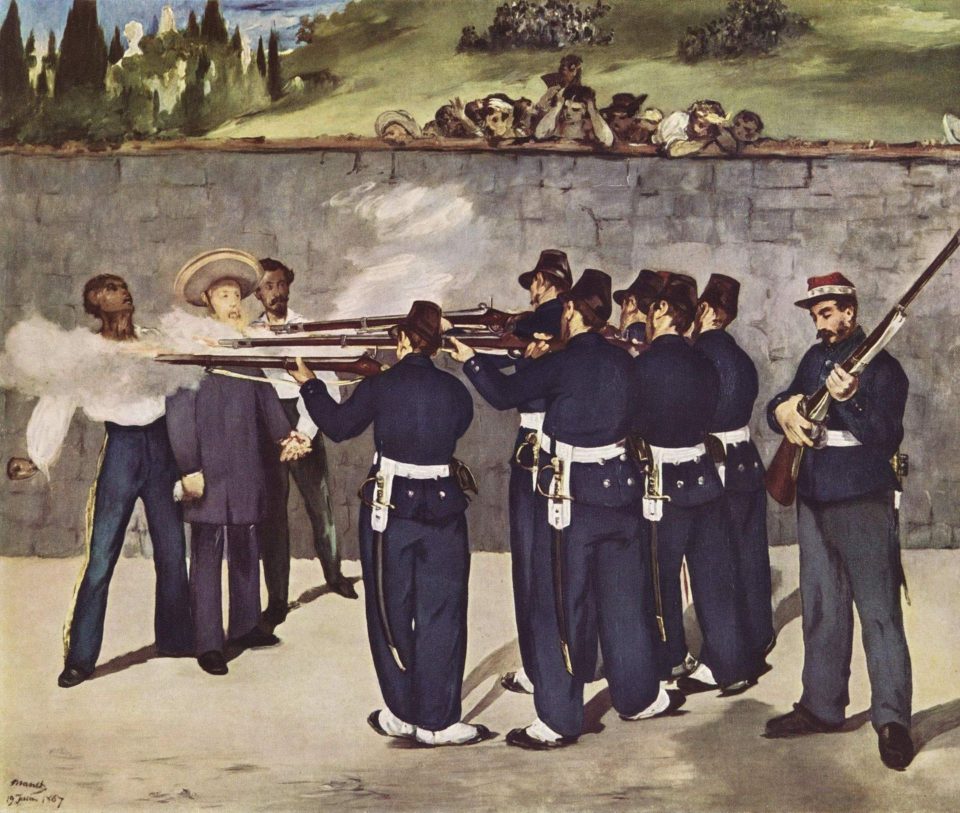One of the first Spanish master painters that put emphasis not only on documenting a tragic moment in the history of Spain but also on the emotional impact that this would have on its common citizens was Francisco de Goya (1746-1828).
“The 3rd of May 1808 in Madrid” or “The Executions” is the title of the oil on canvas that Goya created in 1814 (currently at the Museo del Prado in Madrid), just a few years after the invasion of Spain by the Napoleonic troops. What is interesting about this painting is the way in which Goya is depicting the moment of execution of a group of patriots from Madrid, with the buildings of the city emerging from the dark on the background.
The French soldiers are on the right side of the composition, depicted as automatons, war machines ready to kill, their backs facing the observers. The drama and tension of this scene are heightened by the use of light, which illuminates the heroes while leaving the troops in the dark. The only recognisable faces are the ones of the Spanish patriots, making it possible to distinguish their characters and attitudes in a detailed psychological character study. Although the genre in which this artwork is inscribed is historical painting, what Goya is trying to focus on is the testimony of the drama from a human point of view. Notice the position of the arms of the man in the white shirt, imitating Christ on the cross, a symbol of sacrifice for the freedom of others. Moving slightly to the left, we can see the representation of rage in the man in a brown shirt who is defying the soldiers by showing his fists and intensely looking at them in the eyes. There is also someone who surrenders and attempts to pray maybe for the last time in his life. The group of patriots on the right are so shocked by the situation that are not even able to look at what is happening, covering their faces with their hands.
What we see here is not a depiction of Neoclassical heroes, perfect bodies without any sign of fear for death but rather a realistic image of sacrifice for freedom and the human emotional implications of this act. Goya does not hide the bodies of the executed patriots but rather positions them on the foreground while still covered in their fresh blood, showing the brutal face of war and resistance.
Goya inspired other artists such as Manet in “The Execution of Emperor Maximilian” (1868–69) and later Pablo Picasso in “Massacre in Korea” (1951).
What is your favourite artwork that deals with political issues? Tell us about it in the comment section below!

detail of Goya’s “The 3rd of May 1808 in Madrid” 
Édouard Manet, “The Execution of Emperor Maximilian”, 1868–69, Oil on canvas, 252 x 305 cm, Kunsthalle Mannheim 
Pablo Picasso, “Massacre in Korea”, 1951, Oil on plywood, 110 × 210 cm, Musée Picasso, Paris 
Francisco de Goya, “The 3rd of May 1808 in Madrid”, 1814, Oil on canvas, 268 × 347 cm, Museo del Prado, Madrid